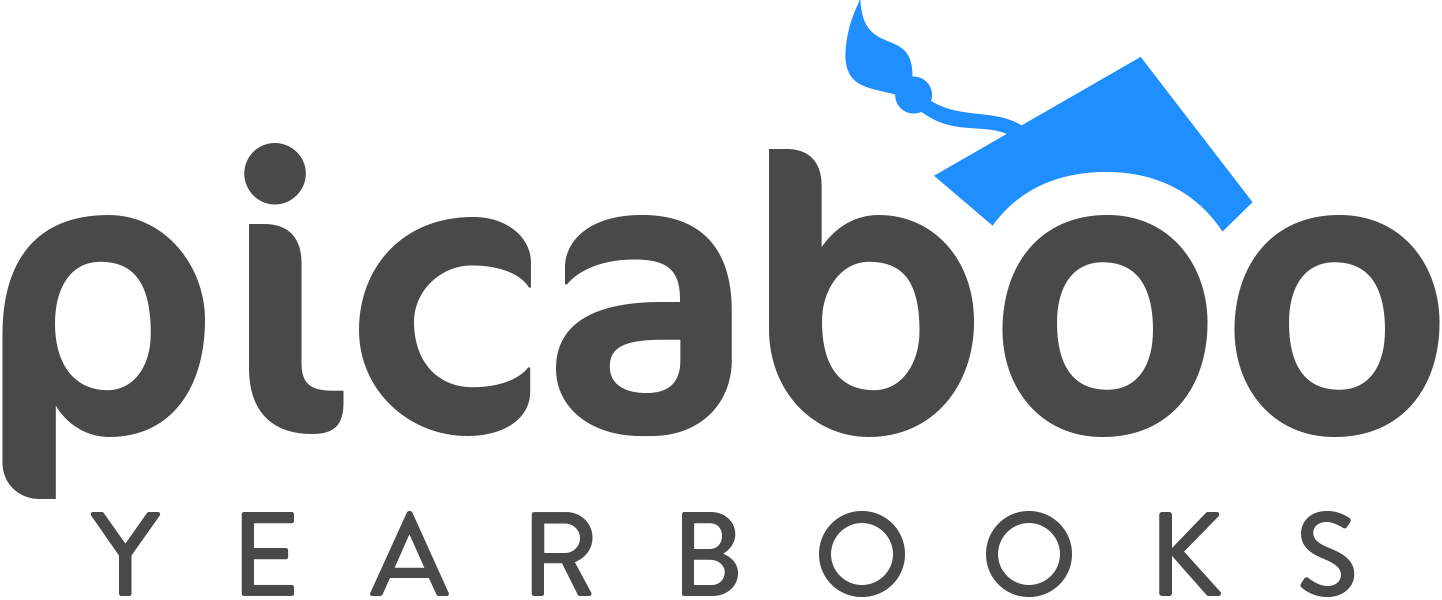Building Eye Catching Covers
By: Mike Stephens, Senior Graphic Designer at Picaboo Yearbooks
Have you ever heard the expression “Beauty is in the Eye of the Beholder”? It’s been around in print for nearly 200 years, and it shows that design has impacted viewers for a very long time. In the world we currently live in today it’s one of the most vibrant and prevalent industries – it is literally in every aspect of our lives. If you think about items like clothing, shoes, food packaging, street signage and even a writing pen — they have all been carefully designed by a designer to ensure that the right physical and visual attributes that they posess will help fill a gap in a specific marketplace and/or relay information in a clear and concise way. There are of course a lot of times a designer’s goal is to simply make something beautiful and unforgettable, like a timeless yearbook design!
In order to build a beautiful visual that will have a positive impact on the viewer, there are certain fundamentals and principles of graphic design that most artists will consider when starting a project. There are many options for each of the seven categories, and it will be the graphic designers job to find out which direction to take to make sure everything comes together in a cohesive, clear and stunning way.
Lines
Shapes
Texture
Form
Space
Color
Value
Of course most designs are NOT created equally. A yearbook cover design will be approached very differently than say — a product packaging design. The focus would be very different, as one is relaying product details, and a yearbook cover is ultimately capturing a moment (or a year of moments) in time. Before a design can get to the “ink on paper” stage, there are two important questions that should always be asked. These answers will ultimately lead the designer through the decision making processes on the above seven categories.
Theme
Message
THEME
As a cover designer, I truly believe a theme is the place to start. A great theme can truly capture the culture of the student body and lead the design to the finish line. As an example, if a designer is designing a fiction novel cover, the story itself will drive the design choices. A theme will serve as the story for the yearbook cover, and the students will serve as the story for the theme. Do you need a theme? I don’t think it’s necessary, but I strongly believe it will elevate a design.
MESSAGE
The messaging is the theme’s parter-in-crime. Covers that don’t have a theme to start can be built solely upon a strong message. The majority of well-designed yearbook covers will have some sort of messaging that plays off of the visual elements or sets the stage for the visuals. Most well-designed covers will feature a message with one, two or three words. For instance, if a school wants a custom cover to play off of the 2020 vision theme, maybe the tagline/messaging could be “Eyes on Us”, or “Our Viewpoint”. Another example could be a vintage camera theme and the message could simply be, “Snapshots” or “Picture This”. The message can exude a tone for the book, and everything else can follow suit.
However, it’s important to remember that there are no rules when it comes to designing a yearbook cover. There are plenty of great cover design with nothing but a mascot or a school name and date on the cover. With great use and understanding of the 7 fundamentals below, anything is possible!
LINES
Within a design, you’ll probably have lines that will outline or highlight text, border around specific graphics, connecting graphics and much more. You can choose straight lines, diagonal, dotted, brush-stroked, broken, curvy and much more.
SHAPES
Within a cover design, you’ll always have shapes that encase text, or simply build around your entire frame. There are generally three categories of shapes: Geometric, organic (trees, people), and abstract (icons, mascots). Shape is also one of the defining decisions when choosing a font. Each font face has very different shapes, which will give your design a completely unique feel.
TEXTURE
Texture within a cover design can add depth and light to the surface of objects, give the feeling of movement, or an overall general feel. A linen or leather texture behind a design can make it feel classy, and a grunge/scratch texture can make it feel strong and resilient.
FORM
Form is the way a graphic designer will build the sense of dimension within an object. This can be achieved through other elements such as line, value and shape.
SPACE
The space fundamental can give your designs a sense of dimension by overlapping objects. On the other end of the spectrum, creating the right alignment and spacing between objects to make sure there’s enough “air” on a cover is a very important item to keep in mind. It can create balance. It’s the difference between misaligned clutter and allowing the viewers yes to hit the right viewpoints on a page.
COLOR
The color of a cover can be one of the first things a viewer will feel, and it will immediately create a sense of mood or tone. Cool colors can make a viewer feel calm and relaxed. Warm colors can make a viewer feel a sense of passion and power. Colors can be school colors, or simply used to make the cover theme work. Colors can be used with other characteristics, such as hue, tone, shade and tint and intensity.
VALUE
The value of the cover will dictate how light or dark your cover will be. When using similar shades, like black, little value changes can make a design seem flat. Adding contrast by using wide varieties of value can give contrast and build dimension and assist with form.









